Idea by
Carlos Moles Romero
Call for ideas 2020
Fábrica La Fábrica
Fábrica La Fábrica
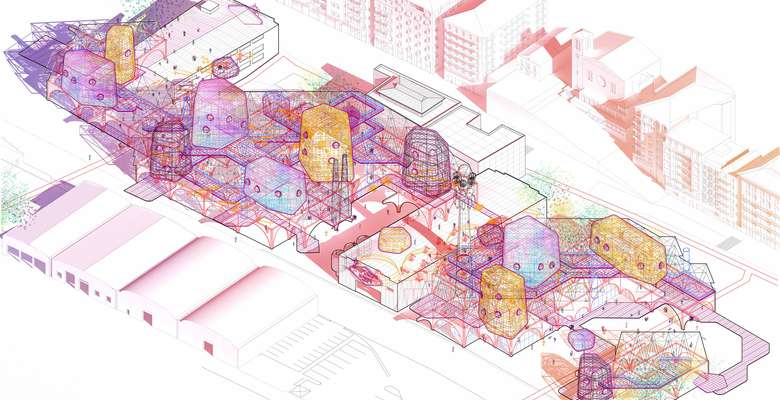
- Systemic changes
La Fábrica is the factory Pasaia lacks, a living organism that reproduces itself almost biologically and develops the industrial landscape.
The program is distributed in 3 elements. Gems: they hold private uses. Incubators: they house communications and open working rooms. Kitchens: they function as a large manufacturing plant.
Technology becomes an everyday reality and machines are used by neighbours to invent architectures that turn on and off. In this way, an identity is created among the inhabitants of Pasaia, a proud exhibition, an artistic work that wants to be shown, and even exported thanks to the communications of the harbor.
The coexistence of clean and dirty workshops, installations and finishes, technology and tradition, generates a new area of innovation that regenerates the area in favour of its own evolution. Thus, a new industrial development is achieved for the port, a new specialization for a neighborhood historically linked to the technological vanguard.
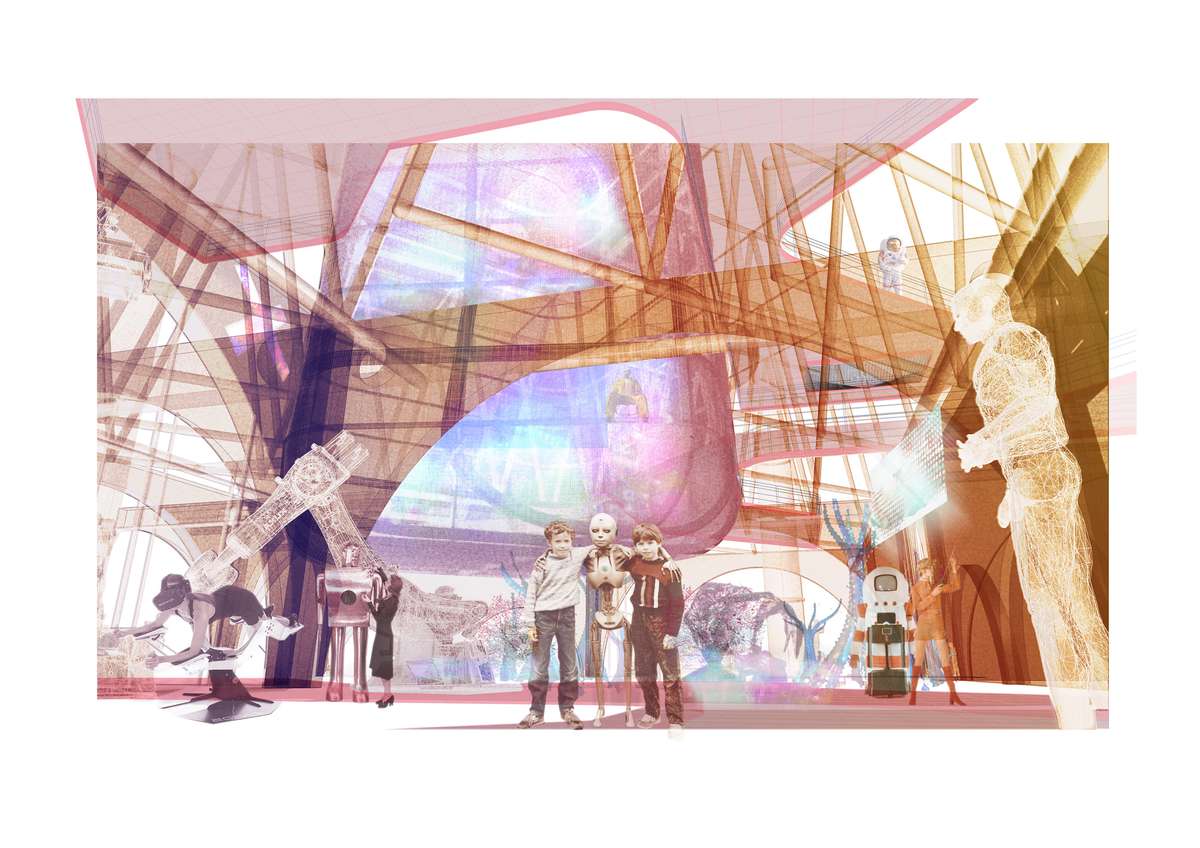
Its architectural development responds to a demand of coexistence between more private uses conceived for people and open uses designed for machines. The construction system is generated to accommodate this mix of needs in the 3 main spaces, and at the same time allows the expanding project to grow as much as necessary.
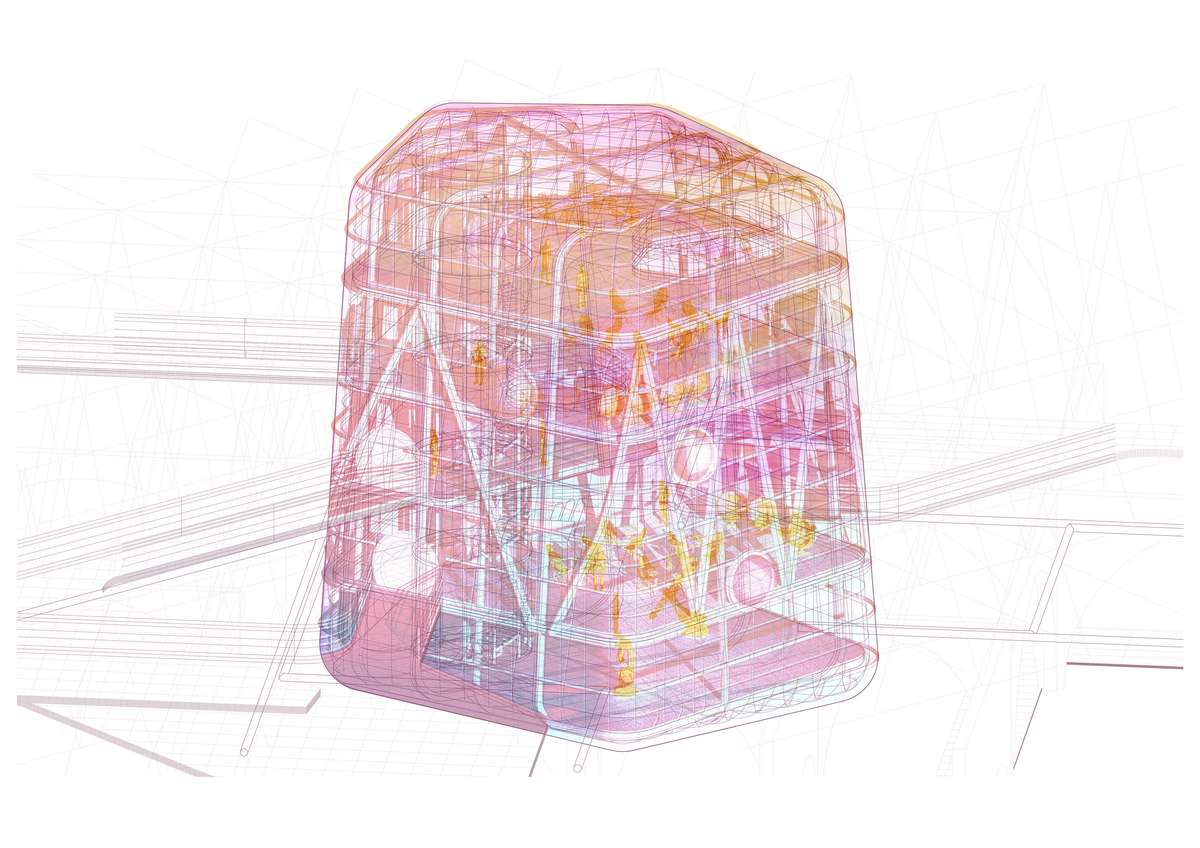
The Gems are the most important part of the project. They are the base of operations of La Fábrica.
There are a total of 15 different Gems, with different complementary uses. There are 3 types depending on the exterior material of their facade. The finishes give them a dichroic, golden or completely transparent appearance.
The uses of the gems permit the functionality of the cultural center. The Gems generate projects, which are grown in the Incubators and produced in the Kitchens.

Kitchens: reinforced concrete arched structures at ground level. These rest on the pile cap by use of a metal plate and rise to a height of 8 metres. The maximum span of the arches, 15 metres, is supported by the arch-shaped metal profile, reinforced with a metal mesh and subsequently concreted.
At street level, the Kitchens are organised into an orthogonal grid of 7.5 metres, which breaks with the pavement and adapts to the pre-existing buildings.
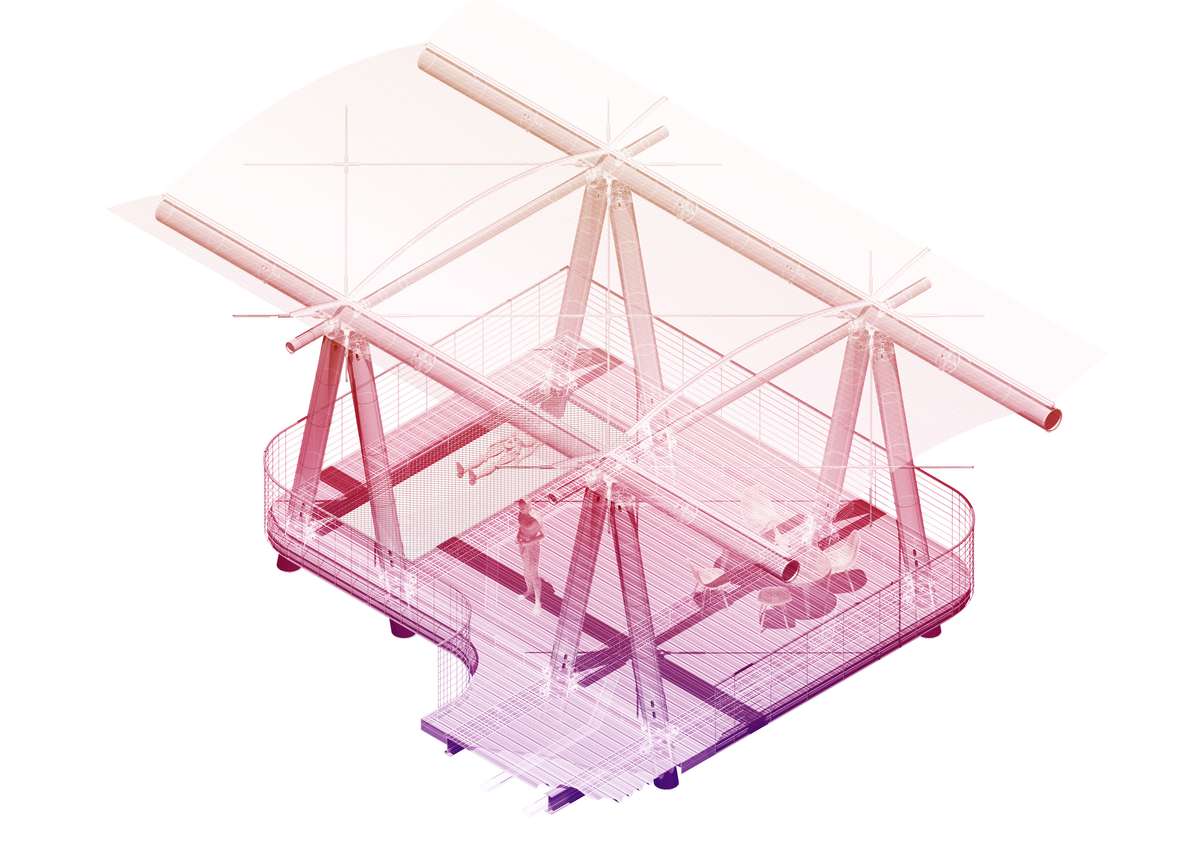
At a higher level, Incubators are supported by the vertices of the arches, with a 45º angle, and support both communications and work and rest spaces on walkways.
These spaces have a free height of 4 metres and are free to acquire different extensions. They are covered by an ETFE shell, which curves slightly towards the upper cord of the truss on aluminium profiles.
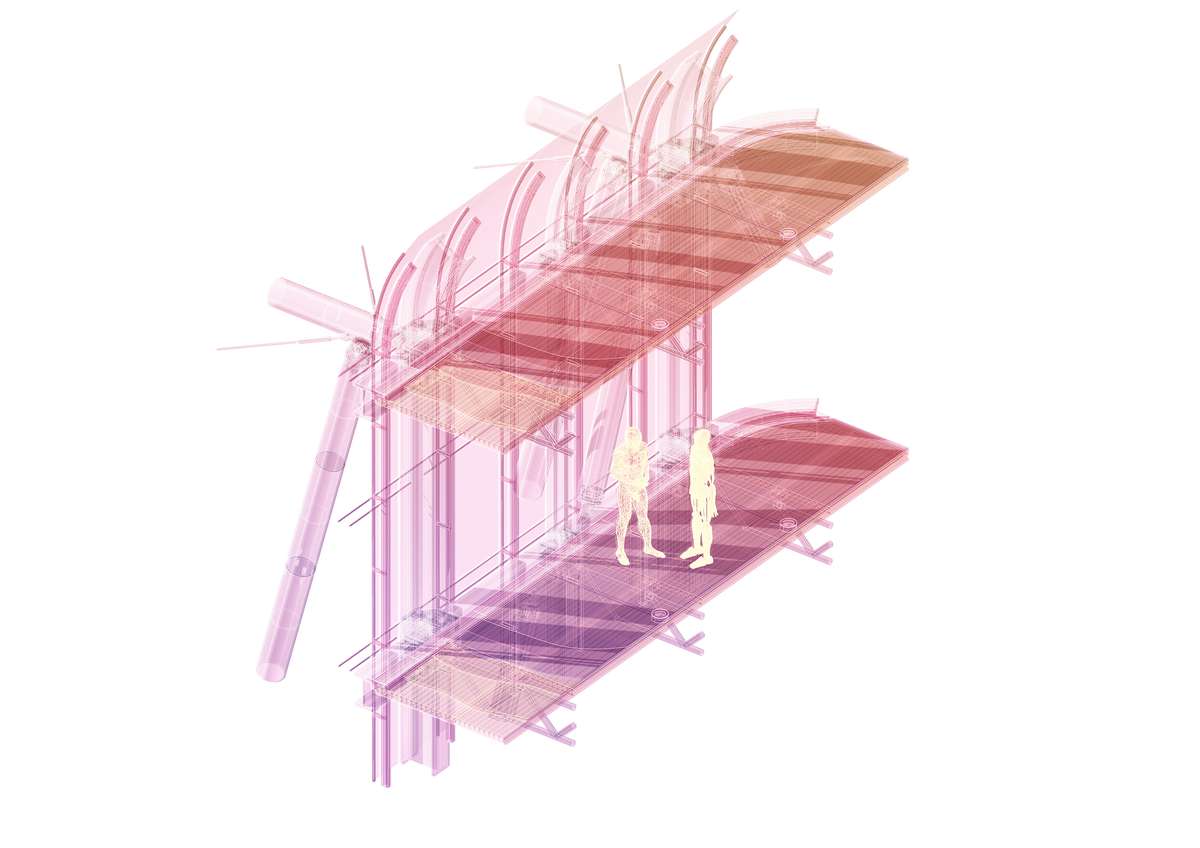
Six main articulated knots are responsible for connecting the Gem with the rest of the structure. Its structure of metal rings rests on the truss structure of the Incubators and supports slabs separated 4 meters in height, connected to the walkways.
Fábrica La Fábrica
Fábrica La Fábrica

- Systemic changes
La Fábrica is the factory Pasaia lacks, a living organism that reproduces itself almost biologically and develops the industrial landscape.
The program is distributed in 3 elements. Gems: they hold private uses. Incubators: they house communications and open working rooms. Kitchens: they function as a large manufacturing plant.
Technology becomes an everyday reality and machines are used by neighbours to invent architectures that turn on and off. In this way, an identity is created among the inhabitants of Pasaia, a proud exhibition, an artistic work that wants to be shown, and even exported thanks to the communications of the harbor.
The coexistence of clean and dirty workshops, installations and finishes, technology and tradition, generates a new area of innovation that regenerates the area in favour of its own evolution. Thus, a new industrial development is achieved for the port, a new specialization for a neighborhood historically linked to the technological vanguard.
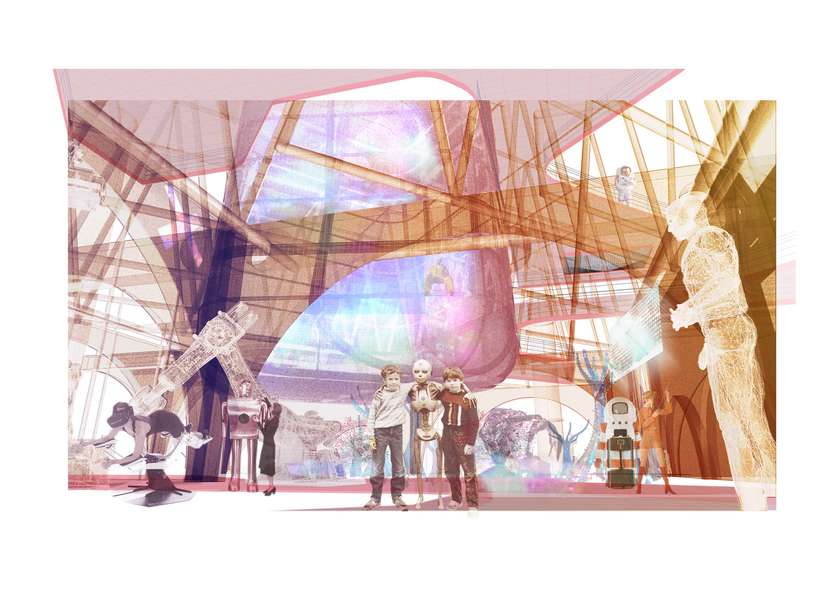
Its architectural development responds to a demand of coexistence between more private uses conceived for people and open uses designed for machines. The construction system is generated to accommodate this mix of needs in the 3 main spaces, and at the same time allows the expanding project to grow as much as necessary.
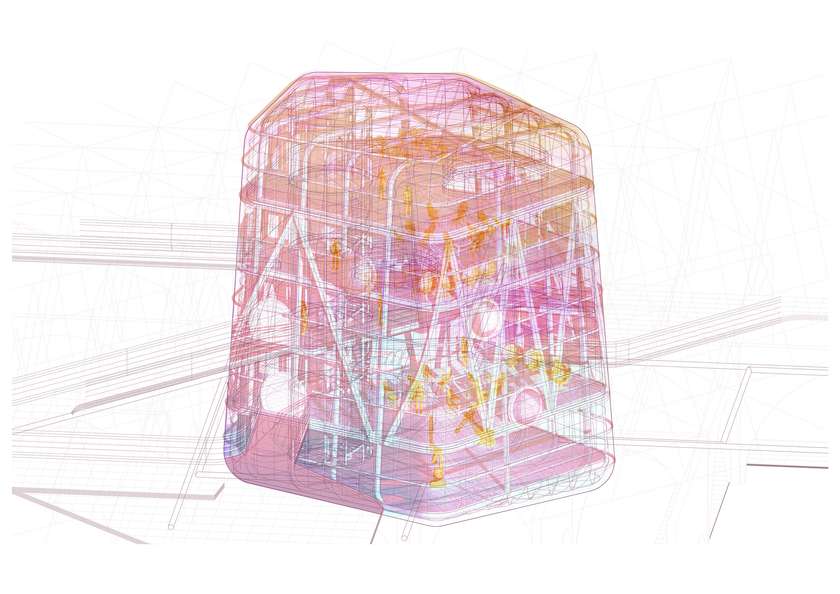
The Gems are the most important part of the project. They are the base of operations of La Fábrica.
There are a total of 15 different Gems, with different complementary uses. There are 3 types depending on the exterior material of their facade. The finishes give them a dichroic, golden or completely transparent appearance.
The uses of the gems permit the functionality of the cultural center. The Gems generate projects, which are grown in the Incubators and produced in the Kitchens.
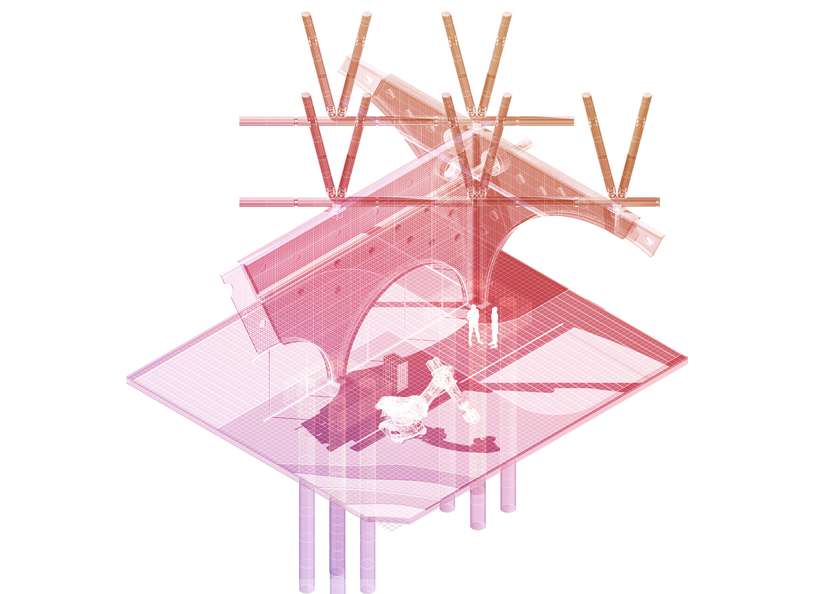
Kitchens: reinforced concrete arched structures at ground level. These rest on the pile cap by use of a metal plate and rise to a height of 8 metres. The maximum span of the arches, 15 metres, is supported by the arch-shaped metal profile, reinforced with a metal mesh and subsequently concreted.
At street level, the Kitchens are organised into an orthogonal grid of 7.5 metres, which breaks with the pavement and adapts to the pre-existing buildings.
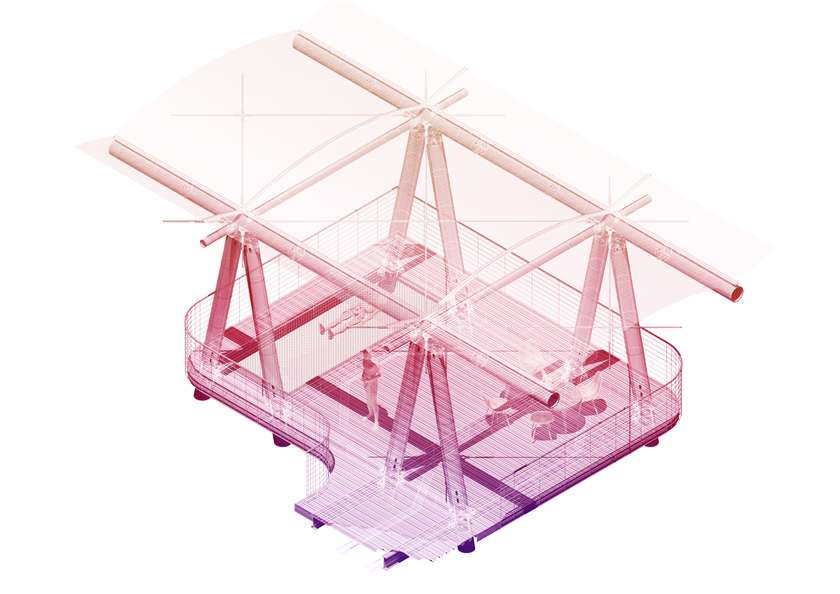
At a higher level, Incubators are supported by the vertices of the arches, with a 45º angle, and support both communications and work and rest spaces on walkways.
These spaces have a free height of 4 metres and are free to acquire different extensions. They are covered by an ETFE shell, which curves slightly towards the upper cord of the truss on aluminium profiles.
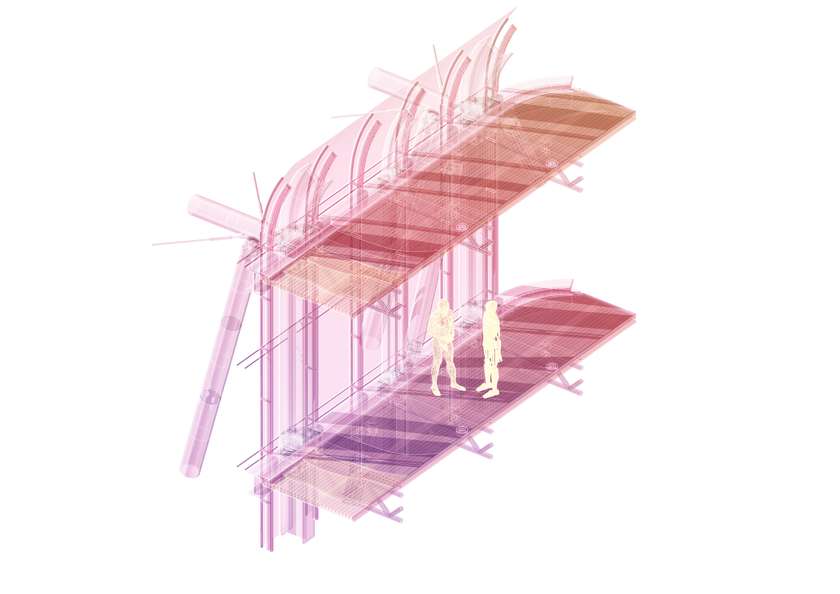
Six main articulated knots are responsible for connecting the Gem with the rest of the structure. Its structure of metal rings rests on the truss structure of the Incubators and supports slabs separated 4 meters in height, connected to the walkways.